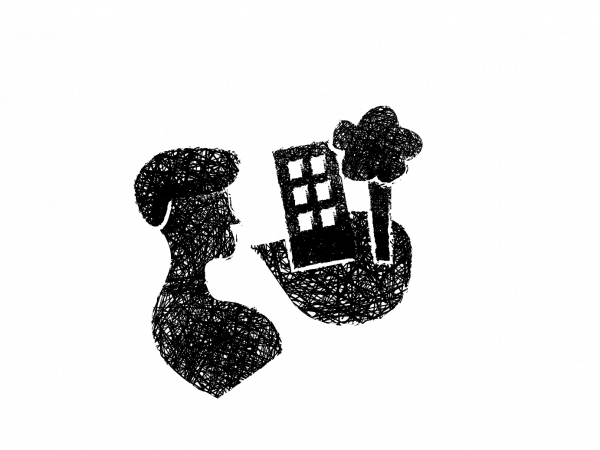- Home
- EN
- Our impact
- ProspeKtive
- Working remotely: what are the issues of visibility and recognition?

Working remotely: what are the issues of visibility and recognition?
March 2023
The experts
In recent years, many companies have begun to reconfigure their workspaces, seeking to experiment with new ways of working. The recent pandemic, by imposing a brutal despatialization of work, has been a gas pedal of the transformations underway, notably with the generalization of telecommuting. A large-scale research project conducted within a major insurance company has shed new light on what happens in terms of visibility and recognition when one works remotely.
Existential recognition practices in the face of telework
The extreme nature of the crisis and the brutal conditions under which telework has been generalized have exacerbated the need for existential recognition at work. Existential recognition, identified by Brun and Dugas (2005) as the foundation on which all other recognition practices are built, affirms the existence of the individual as a unique and singular being. Usually, this form of recognition is expressed informally in the daily flow of interpersonal relations. During the confinements, the leaders of the organization we studied, as well as the front-line managers, testified to the inventiveness deployed to try to respond to this need, to take care of individuals and teams, and to manage and support personal situations on a case-by-case basis. Nevertheless, the mediatized nature of interactions during periods of massive telework has made this task particularly heavy and delicate. Indeed, teleworking accentuates the visibility of workflows and results and therefore the attention paid to them, to the detriment of individuals and informal spaces of sociability. Throughout the crisis, employees and managers have constantly recreated in virtual space places of sociability, places for informality, often in an artificial way, but which we can read as a struggle for existential recognition, to maintain visible at all costs what makes each one of us a human being.
Faced with the intensification and hyperventilation of work flows, a risk of invisibilization of practices and commitment
The recognition of investment and practice are forms of recognition that touch on what Dejours (1993) calls the invisible part of work because they most often escape the quantifiable and objectifying measurement of management artifacts. Perceptible in a situation of co-presence, the effort put into the work, the expertise and the know-how become less visible at a distance and can fuel the feeling of a denial of recognition. Faced with the challenge of invisibility, some employees have nevertheless been able to (re)highlight their practices and commitment within digital spaces. By positioning themselves as knowledgeable, technical support or helpers, they have gained new recognition from their peers, their hierarchy, and even new contacts. For them, the work overload resulting from the multiple demands, far from producing the feeling of alienation described in the literature, becomes acceptable, since it allows them to confirm their social value (Honneth, 2005).
New hires and local managers, two particularly exposed populations
New hires have been confronted more severely with the experience of digital invisibility. When they came out of confinement, they felt that they did not really know the people with whom they had been interacting remotely for months. Thus, the sharing of a common history and the fact of knowing each other beforehand act as a memory trace that partially compensates for the distance in a telework situation. The specific case of new hires therefore invites companies wishing to make telework sustainable to adapt their integration processes accordingly.
Furthermore, this case study highlights the ambivalence of the experience of visibility for managers during the crisis. On the one hand, they were highly exposed and the organization positioned them in a pivotal role in the operational implementation of business continuity; but on the other hand, the dispersion and prolonged distancing of their team acted as a revelation of the erosion of the traditional figure of the manager. For some, this experience of invisibilization among their employees resulted in a questioning of their professional identity. Far from being recognized as having a new social value by their team in view of their increased commitment, some managers have perceived that their function is being called into question. In the traditional professions, many employees who were asked to open their cameras in video conferences in order to facilitate the facilitation, preferred to prolong their chosen invisibility, leaving the manager to monitor the digital traces attesting to their results. However, managers cannot be content with coordinating "a group of people linked by the work they do", as one of them put it. They traditionally exercise their role in an embodied form, in physical spaces through their material presence, their physical and visible aspects. Managing at a distance therefore requires the development of new skills.
In conclusion, the work modalities imposed by the crisis have acted as a revelation of complex and unpredictable social dynamics that can be played out when work spaces are modified. The results of this research are likely to contribute to the current reflection of companies on the future of work and its new spatializations.
References
Bia Figueiredo, M., et Besson, M. (2023). (In)visibilité dans les nouveaux espaces de travail : l’expérience du télétravail durant la crise COVID19 revisitée au prisme des théories de la reconnaissance, Revue internationale de psychosociologie et de gestion des comportements organisationnels, vol. xxviii, no. 75, 2023, pp. 151-176.
Brun, J-P., & Dugas, N. (2005). La reconnaissance au travail : analyse d'un concept riche de sens. Gestion, 30(2), 79-88.
Dejours, C, (1993). Travail, usure mentale : de la psychopathologie à la psychodynamique du travail (nouvelle édition augmentée). Bayard.
Honneth, A. (2005). Invisibilité : sur l'épistémologie de la « reconnaissance. Réseaux, 1, 39-57.
Release date: March 2023





